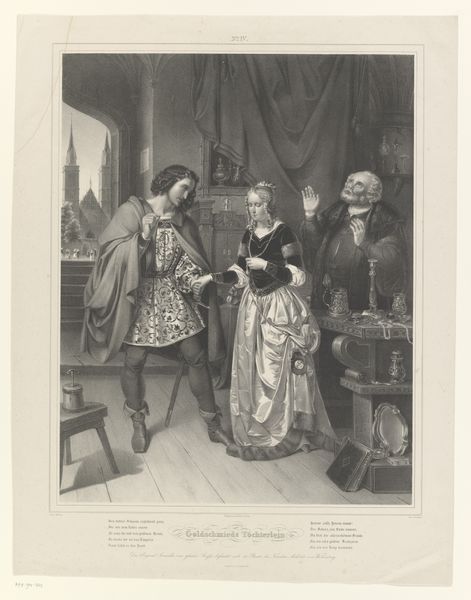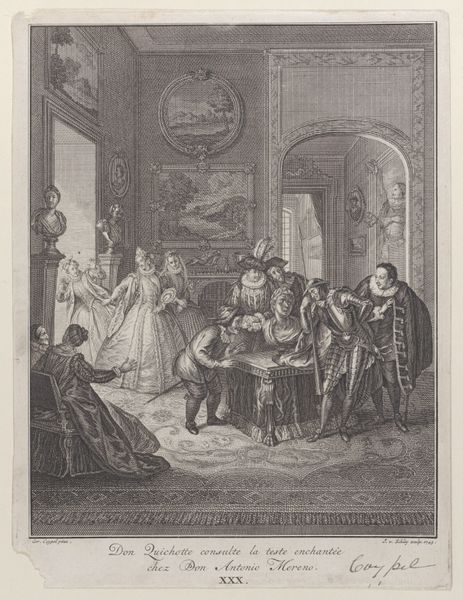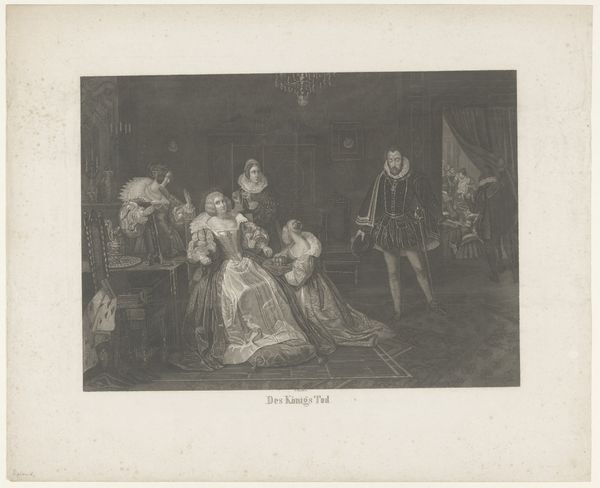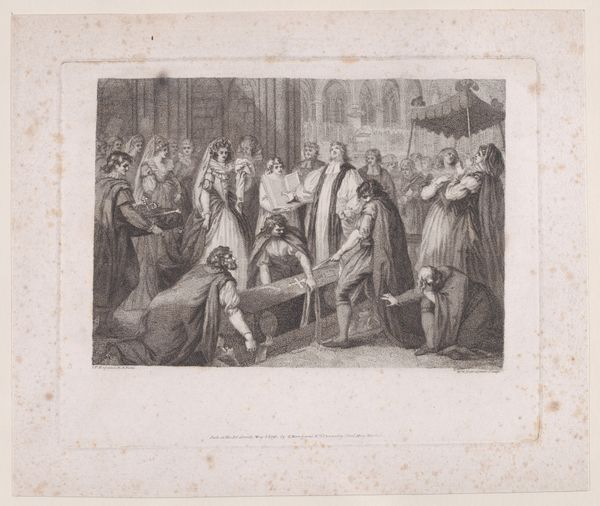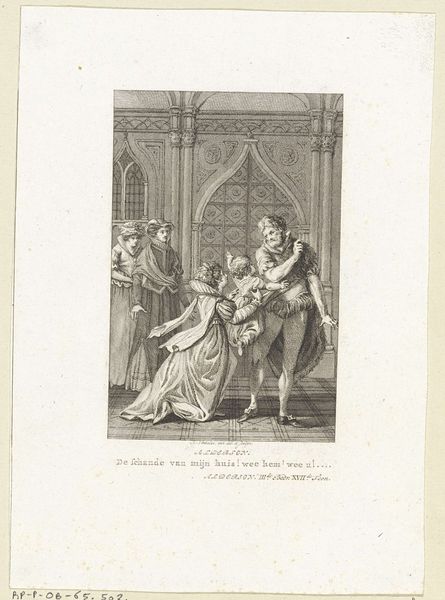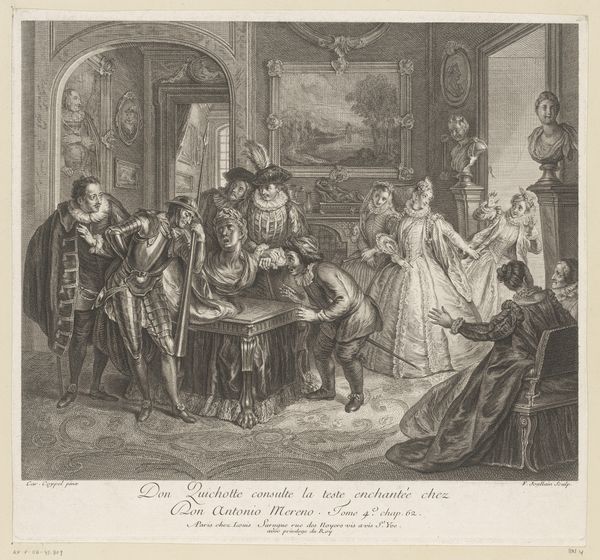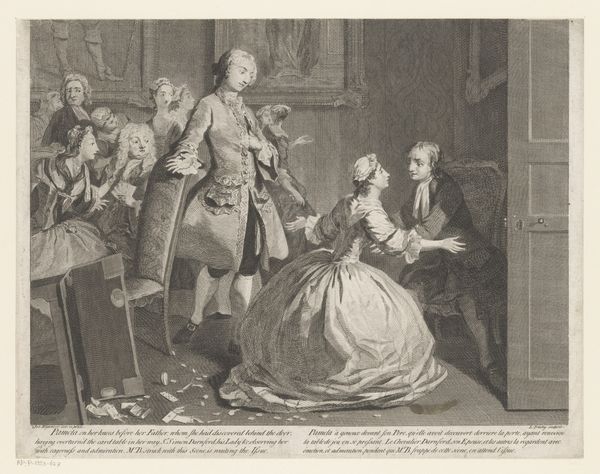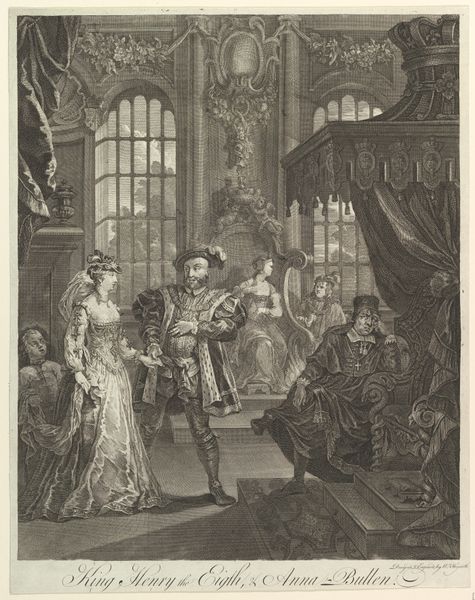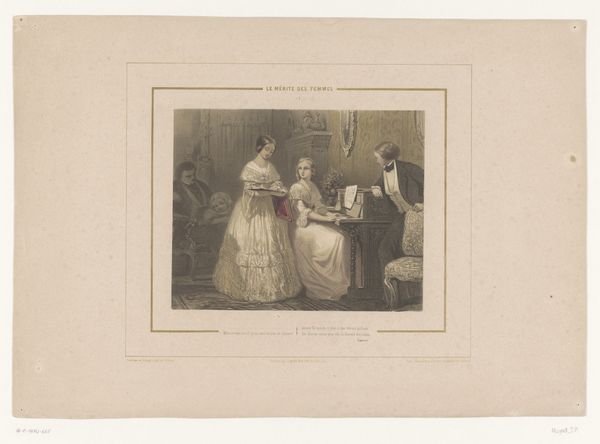
Fotoreproductie van The signing of the death warrant of Lady Jane Grey door Daniel Huntington 1870 - 1900
0:00
0:00
Dimensions: height 101 mm, width 62 mm
Copyright: Rijks Museum: Open Domain
Editor: This is a reproduction of "The Signing of the Death Warrant of Lady Jane Grey" by Daniel Huntington, dating from around 1870-1900. It looks like a photographic reproduction of a drawing, possibly an etching or engraving? The scene is heavy, full of tension... What do you see in this piece from a more formal perspective? Curator: What strikes me immediately is the strategic composition. The figures are arranged in a shallow, almost stage-like space. Observe how Huntington uses a restricted palette, relying primarily on tonal variations to create depth and to direct the viewer’s eye. Notice the textural contrasts as well; the smooth planes of Jane's gown, the fur trim on the king’s robe. Where does your eye linger, and why? Editor: I'm drawn to the contrast between Jane's bright dress and the darker clothing of the men surrounding her, especially the executioner looming in the background. I also notice the man who's taking Lady Jane Grey’s hand… what is his role here? Curator: Indeed. Consider the implications of this focal point. The strong horizontal created by the table, intersects with the powerful diagonals generated by the positioning of the standing figures, with the verticality of Lady Jane’s seating position: does this evoke the painting's narrative of the subject as ‘cornered’? Also, reflect on the overall effect created by the tonal contrasts and sharp linear details. Editor: The composition definitely creates a feeling of Lady Jane Grey being caught between powers outside of her control. All this focus on contrasts creates a kind of... imbalance. But I'm curious, since it’s a photographic reproduction, does the analysis change? Curator: The photographic reproduction necessarily flattens the nuances of the original drawing, slightly altering its structure. Though its intrinsic composition and values hold as true, our relationship as a viewer shifts based on its context. Ultimately it acts as a reference to the original work which impacts interpretation. Editor: I never thought of the difference that a photographic reproduction would create. I'll look at reproductions in a new way from now on! Curator: And I shall reflect on our relationship as a viewer, and continue to evolve on the power of visual pieces within distinct periods.
Comments
No comments
Be the first to comment and join the conversation on the ultimate creative platform.
